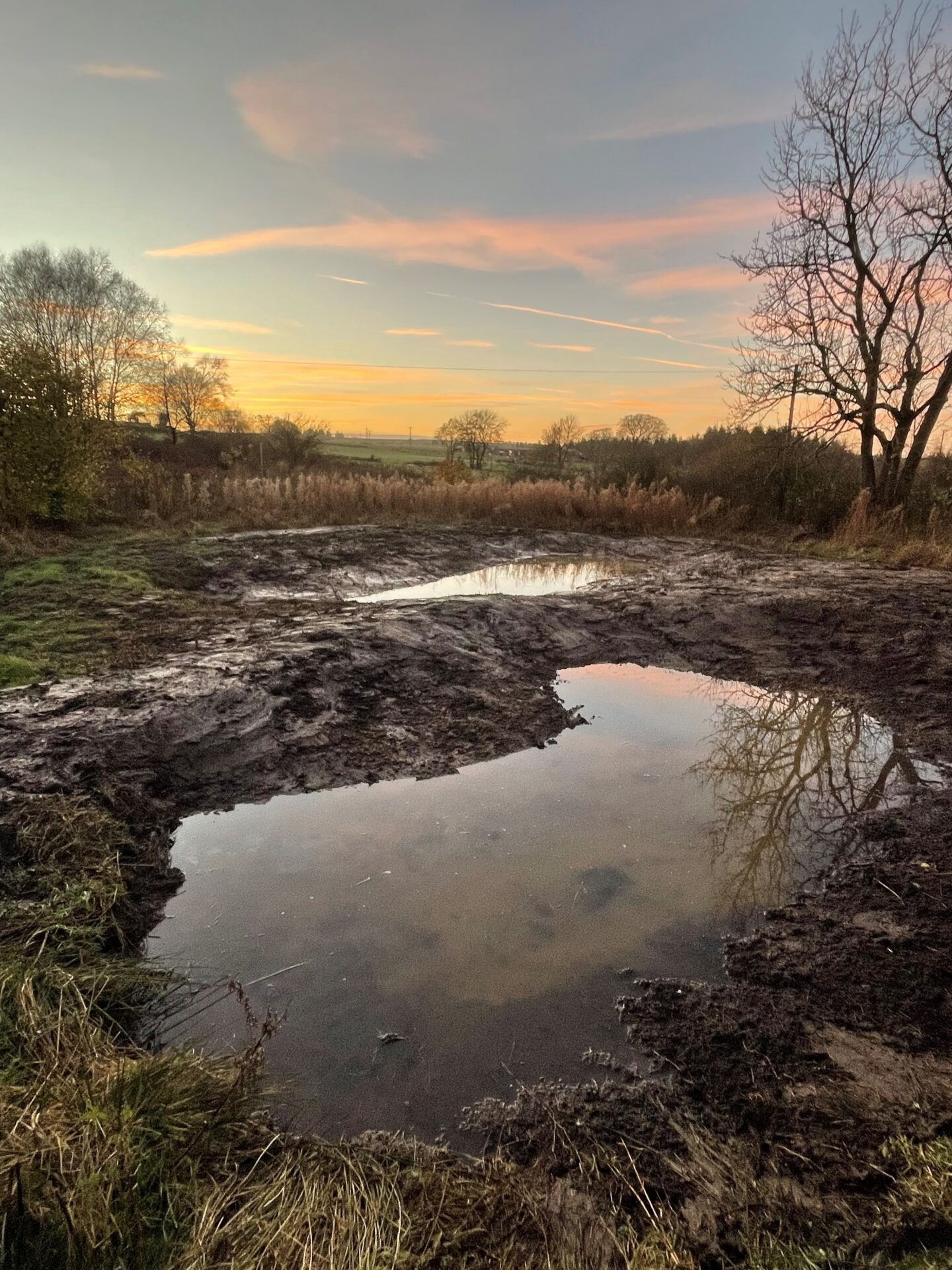Wetlands Success For Nidderdale National Landscape
Published on 8th April 2025 by Alice Crosby

New wetlands are successfully thriving across Nidderdale National Landscape (NNL) providing a vital habitats for wildlife and strengthening biodiversity.
The recent wetland creation efforts have resulted in 34 newly created ponds, 7 restored ponds, and 15 scrape areas – equivalent to 3.5 football pitches – offering diverse freshwater environments for a variety of species.
The project, which is part of NNL’s Nature Recovery Plan, has focused on enhancing habitat connectivity and increasing biodiversity. By working collaboratively with landowners across 17 sites, the initiative has successfully transformed 4.98 hectares of land into wetland habitat within fields covering a total of 134 hectares.
Iain Mann, NNL manager, said “This winter’s pond creation efforts have been ongoing since September and are now nearing completion, just in time for the bird breeding season and the end of hibernation for many species.
“Creating wet features in strategic areas across the landscape creates a more joined up approach providing the optimum opportunity for species recovery. Increasing connectivity ensures greater resilience to climate change.
“Wet habitats are home to insects, small mammals and aquatic invertebrates, which provide feeding opportunities for protected species such as bats, barn owls and red listed ground nesting birds.
“This is an exciting time for wildlife as they begin to explore these new freshwater habitats.”

NNL’s Wetland Creation Project efforts have resulted in 34 newly created ponds, 7 restored ponds, and 15 scrape areas – equivalent to 3.5 football pitches – offering diverse freshwater environments for a variety of species.
The project, which has cost around £200,000, has focused on enhancing habitat connectivity and increasing biodiversity. By working collaboratively with landowners across 17 sites, the initiative has successfully transformed 4.98 hectares of land into wetland habitat within fields covering a total of 134 hectares.
Iain Mann continued: “This winter’s pond creation efforts have been ongoing since September and are now nearing completion, just in time for the bird breeding season and the end of hibernation for many species.
“Creating wet features in strategic areas across the landscape creates a more joined up approach providing the optimum opportunity for species recovery. Increasing connectivity ensures greater resilience to climate change.
“Wet habitats are home to insects, small mammals and aquatic invertebrates, which provide feeding opportunities for protected species such as bats, barn owls and red listed ground-nesting birds.
“This is an exciting time for wildlife as they begin to explore these new freshwater habitats. Future monitoring will help us identify the aquatic invertebrates and small mammals that settle here.”